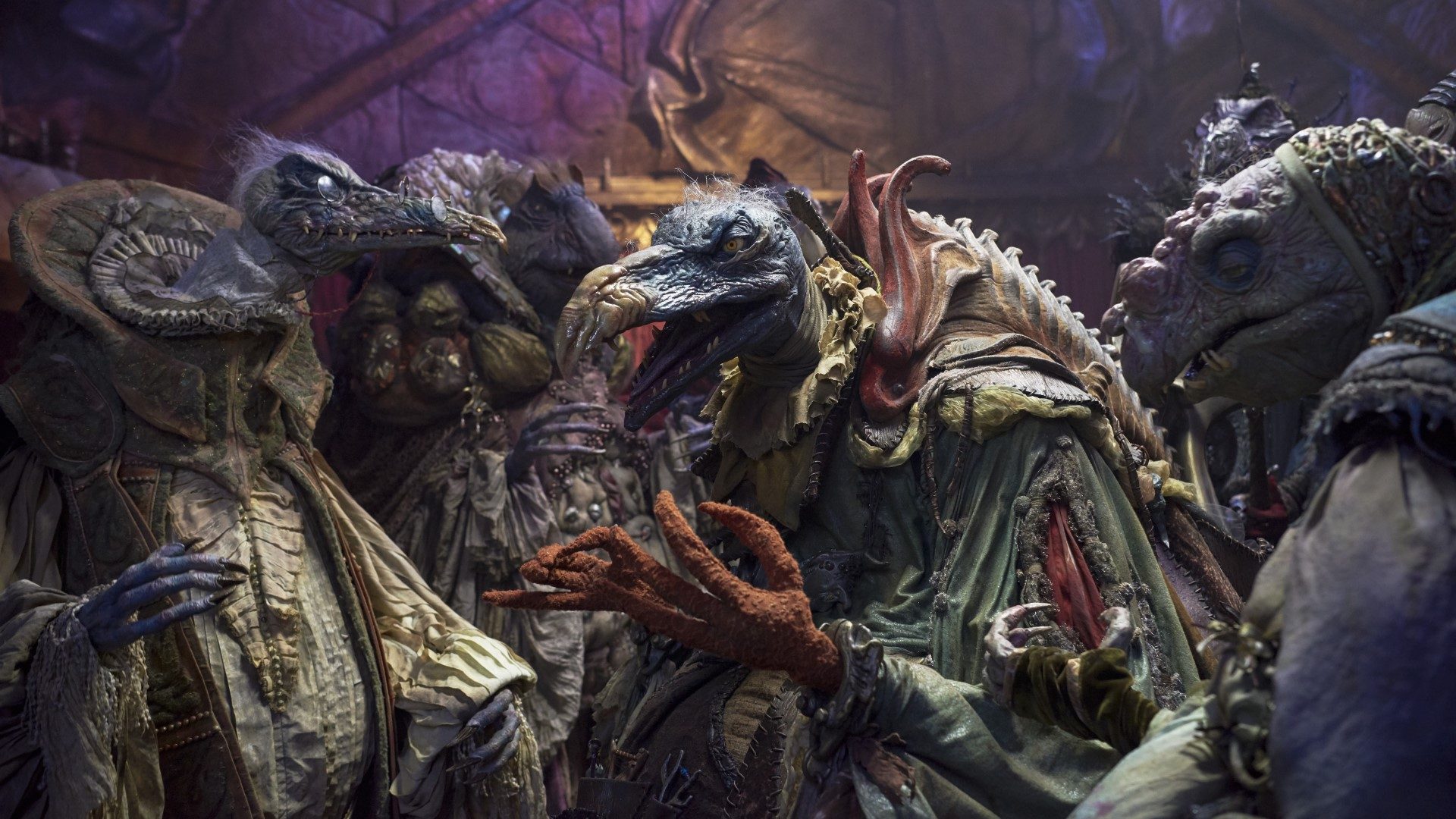Read also:
How to Watch FX Live Without CableHow To Watch AMC Without CableHow to Watch ABC Without CableHow to Watch Paramount Network Without CableThe Jim Henson Company makes a stellar return to form in Netflix’s epic, ten-episode prequel to the classic 1982 film.
If you’ve seen Jim Henson’s 1982 fantasy epic The Dark Crystal, you know how the “age of resistance” will end for the fantastical Gelflings of the film’s imaginary world of Thra. If you haven’t, images or a plot synopsis aren’t difficult to find. They tell the story of the future that Netflix’s new fantasy series The Dark Crystal: Age of Resistance is moving towards — destruction, desiccation, and demise.
And yet, despite knowing where it ends, the ten-episode prequel still commands our attention.
Much of that must be laid at the show’s stunning, throwback visuals, courtesy of the puppetry and production design minds at The Jim Henson Company. As arresting as a landscape as the empty husk of Thra provided nearly four decades ago n the original film, the still-vibrant version presented in Age of Resistance tops it. Technology and variety are, of course, a huge part of that equation. Different environments allow more opportunities for exploration and depth than the largely barren world of the original.

Moreover, Age of Resistance’s judicious use of CGI helps shade the seams without erasing the craftsmanship. The team behind this revitalization, Jeffrey Addiss and Will Matthews, have wisely chosen to embrace Crystal’s practical roots. To make the obvious comparison, they have eschewed the Star Wars prequel model — that full-out embrace of the newest tech — and chosen to instead make CGI just another tool in the arsenal. As a result, the practical sets, puppets, and effects still pop, still create a distinctly unreal and yet wholly enveloping world. The digital assets aid the practical effects, rather than the other way around.
Technology has also no doubt aided the strength of the camera work. Director Louis Leterrier, in collaboration with Cinematographer Erik Wilson, creates a praiseworthy landscape and scope with Age of Resistance. Leterrier’s command of image (fluid and sumptuous, as necessary to the story as it is to showcase the impressive design work) only grows more impressive when one considers the level of technique needed to move with that kind of ease while capturing the “acting” of puppets. Leterrier has always been good for an impressive set piece or a cool action sequence (he’s been a workmanlike action director on things like The Transporter or The Incredible Hulk for years), but his efforts here are the most complete of his career.
In mentioning the puppet performances, it’s imperative to note the work of the Jim Henson Company puppeteers making it all happen. The key to working with puppets is to make yourself invisible. No one should notice a puppeteer because it shatters the illusion, making it difficult to single out any one of the thirteen members of the puppeteer cast for specific huzzahs. Nonetheless, it remains that Warrick Brownlow-Pike, Dave Chapman, Kevin Clash, Alice Dinnean, Damian Farrell, Louise Gold, Beccy Henderson, Helena Smee, Kat Smee, Neil Sterenberg, Olly Taylor, and Victor Yerrid all deserve praise for their impeccable work keeping a vibrant form of performance alive on such a big-budget stage.
Leterrier has always been good for an impressive set piece or a cool action sequence … but his efforts here are the most complete of his career.
Then, of course, there’s the voice cast. If any one aspect of the original Dark Crystal could be singled out for complaint, it would be the voice work, which often felt less like character and more a means to an end. On this score, Age of Resistance does offer strong improvements. Both the terrifying Skeksis and their chief victims the Gelflings gain depth and personalities in this offering.
The vulture-like Skeksis evolve from merely monstrous to a metaphor for both rampant capitalism and industrial consumption of the environment, they feel like villains very much of our political moment. Jason Isaacs’ Emperor and Simon Pegg’s Chamberlain are especially unctuous and unnerving, the very embodiment of Neros fiddling as Rome burns. By letting us see the delight and sense of justification with which the Skeksis begin to bring about the destruction of Thra, their wickedness becomes all the more frightening. Though they remain physically alien, they begin to feel all too much like us — our most selfish desires, our weakest moments, our most callous impulses.
The Gelflings’ evolution goes even farther. Age of Resistance introduces a complex society of various matriarchal tribes, each equally capable of being morally upright or self-involved, sacrificing for the greater good or embracing lazy indifference. Anya Taylor-Joy, Nathalie Emmanuel, Taron Egerton, and Harris Dickinson voice the four most important Gelflings, but the likes of Helena Bonham Carter and Natalie Dormer provide strong backing in relatively small (no pun intended) Gelfling support characters. Of course, Thra is filled to the brim with all kinds of adorable, intricately-designed Henson creatures — especially the Podlings, holdovers from the original film who receive an avatar in Yerrid’s endearing Hup, a babbling sidekick who dreams of becoming the first Podling Paladin.
As with nearly all Netflix projects, pacing is an issue, especially in the early going. It feels like the show takes too long to put its quartet of heroic Gelflings together in its first few episodes. Yes, it provides us the opportunity to know the landscape of Thra and its inhabitants better, but shifting between the groups interferes with us connecting to our leads as quickly as would benefit the story.
There is also a sense (palatable more in retrospect than the moment) that the series ended an episode too early. That’s not to say there is nothing worthwhile in the 10th installment, but it takes a stronger conclusion earlier in the season and bleeds out some of its immediacy. Perhaps a ten hour-long season was too ambitious for a story as sprawling as Thra’s.
Overall, however, Dark Crystal: Age Of Resistance ends up the rarest of prequels: a superior effort that never suffers for knowing what the future holds.

